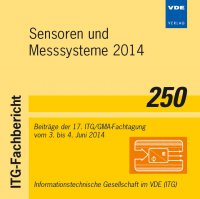Detection of infochemicals in agriculture and environmental chemistry by in situ GC-MS/EAD and semiconductor gas sensors
Conference: Sensoren und Messsysteme 2014 - Beiträge der 17. ITG/GMA-Fachtagung
06/03/2014 - 06/04/2014 at Nürnberg, Deutschland
Proceedings: Sensoren und Messsysteme 2014
Pages: 4Language: englishTyp: PDF
Personal VDE Members are entitled to a 10% discount on this title
Authors:
Duering, Rolf-Alexander (Institut für Bodenkunde und Bodenerhaltung, Justus-Liebig-Universitaet Giessen, Germany)
Kohl, Claus-Dieter; Wehrenfennig, Christoph (Institut fuer Angewandte Physik, Justus-Liebig-Universitaet Giessen, Germany)
Gasch, Tina; Schott, Matthias; Vilcinskas, Andreas (Institut fuer Phytopathologie und Angewandte Zoologie, Justus-Liebig-Universitaet Giessen, Germany)
Abstract:
Analysis of infochemicals occurring in low concentrations in the environment increasingly gains in importance. Those information carrier are essential for communication in ecosystems. They facilitate reproduction and, thereby, preservation of species. Volatile signalling substances (pheromones) are efficiently detected by the antennae of insects. By means of electroantennography, the response of the antennae can be read out and analyzed. The viticultural pest European grapevine moth (Lobesia botrana) is controlled by mating disruption, involving the release of synthetic sex pheromones. For further refinement of this method a portable, automated needle trap device connected to a gas chromatograph, mass spectrometer, and electroantennographic detector (NTD-GC-MS/EAD) was developed. The system was successfully applied in the vineyard. As this highly sensitive technique is of limited lifetime, biomimetic approaches based on stable and cost-effective metal-oxide semiconductor gas sensors could be an option. These technologies should be improved in terms of sensitivity by different preparation and measuring techniques. During application in the field, the sensors responded to the pheromone and to other volatile substances in the vineyard. For improvement of the sensor characteristics different temperature regimes and an additional enrichment unit (Needle-Trap-Device, NTD) were tested. A stepwise desorption of the pheromone from the sorbent resulted in mini-mized influence of interfering substances. Coupling of GC-MS/EAD with NTD provides both measurement of very low ambient pheromone concentrations in the vineyard and an assessment of the overall performance of gas sensors for pheromones. Further potential areas of application are i. e. the investigation of the impact of anthropogenic trace compounds on the communication of eusocial insects which are essential pollinators in agro-ecosystems. This means knowledge gained in chemical ecology should be transferred to ecotoxicology.


